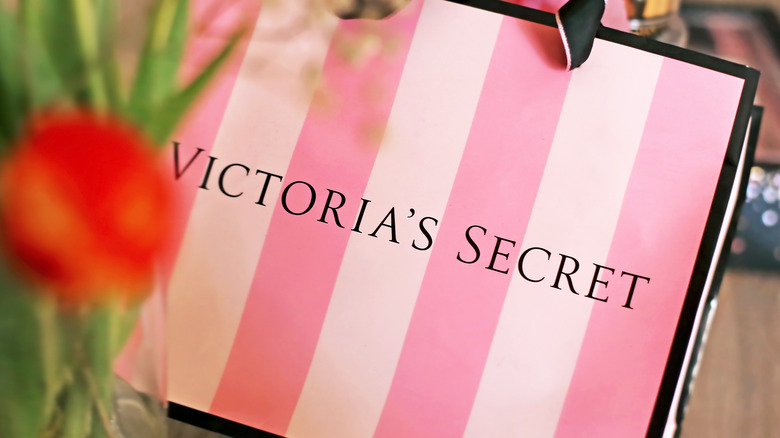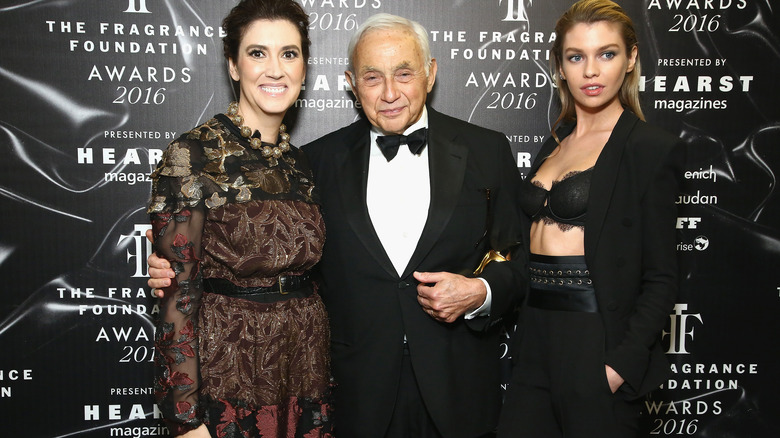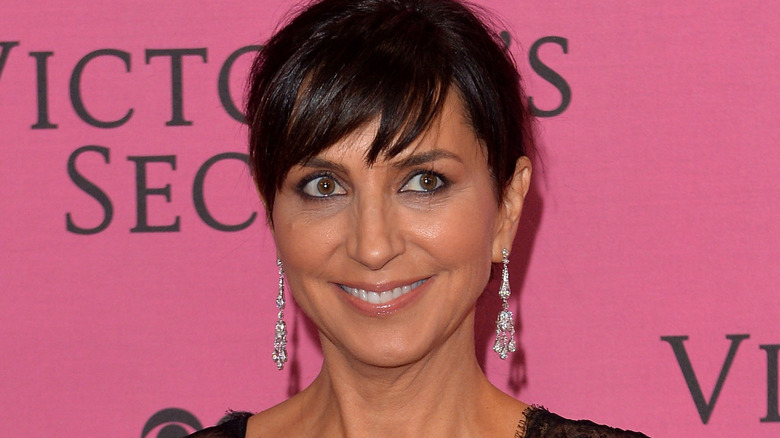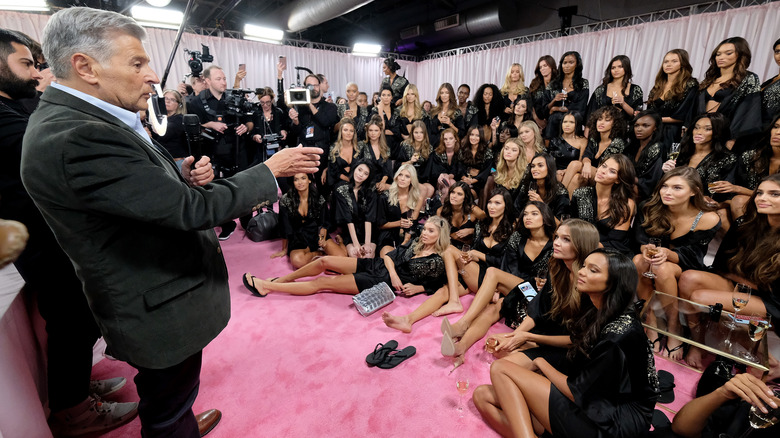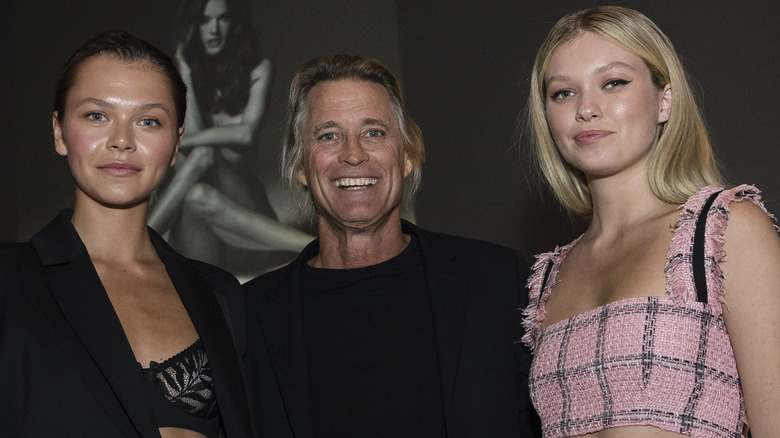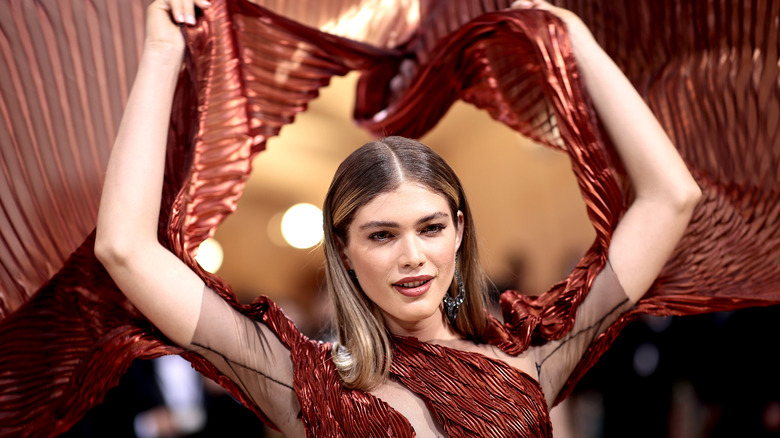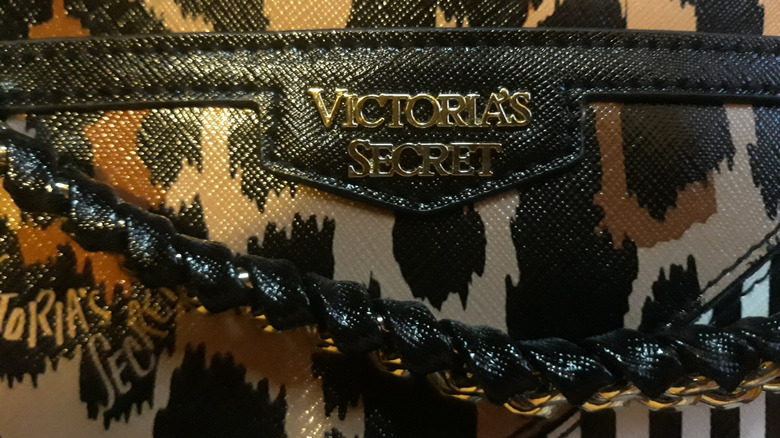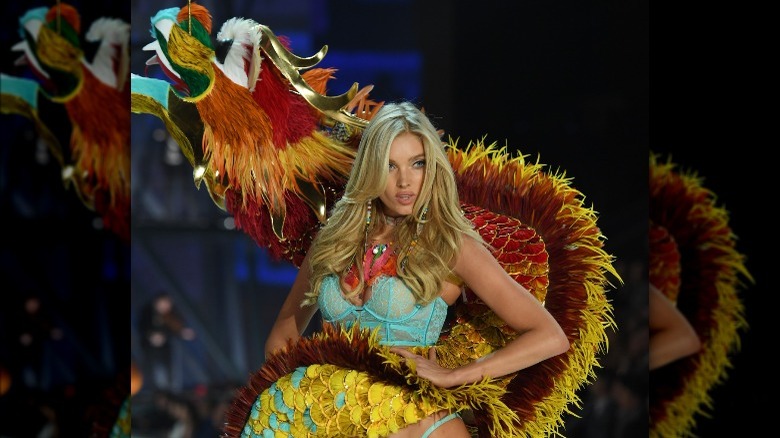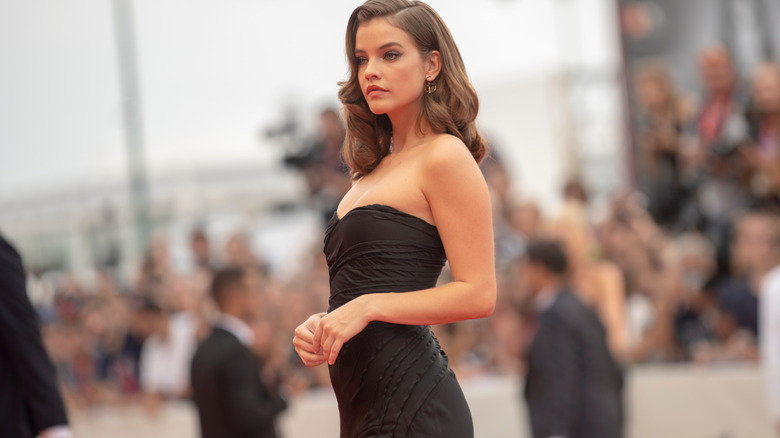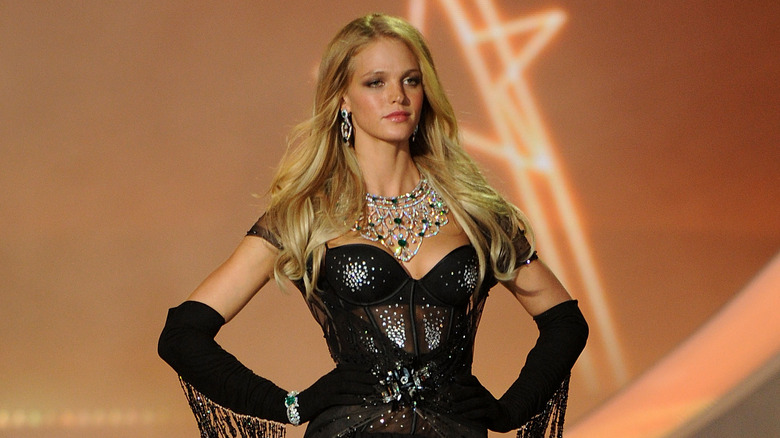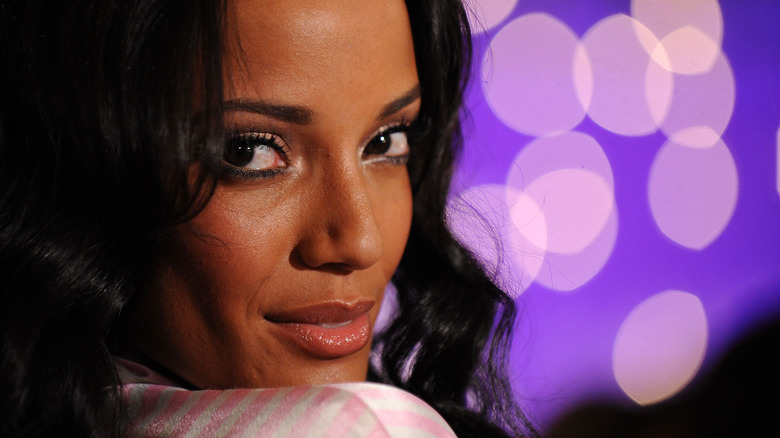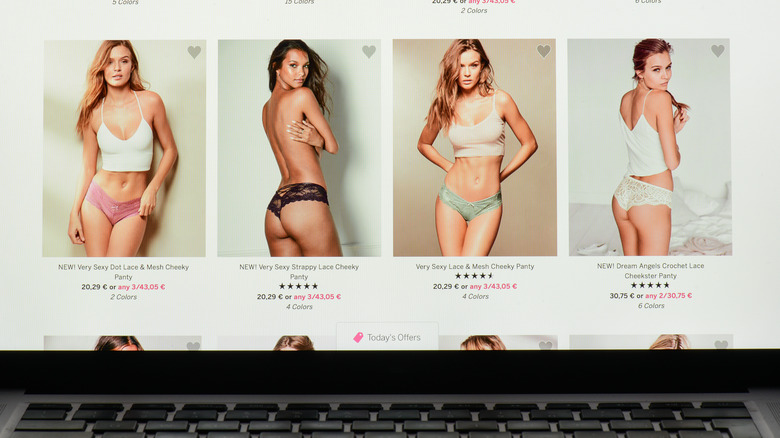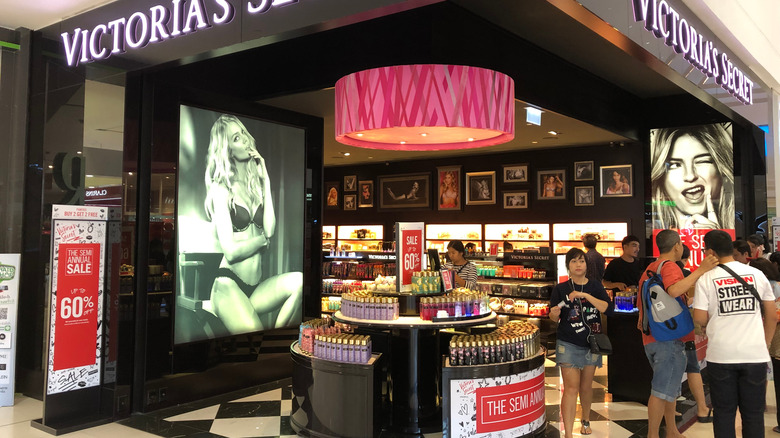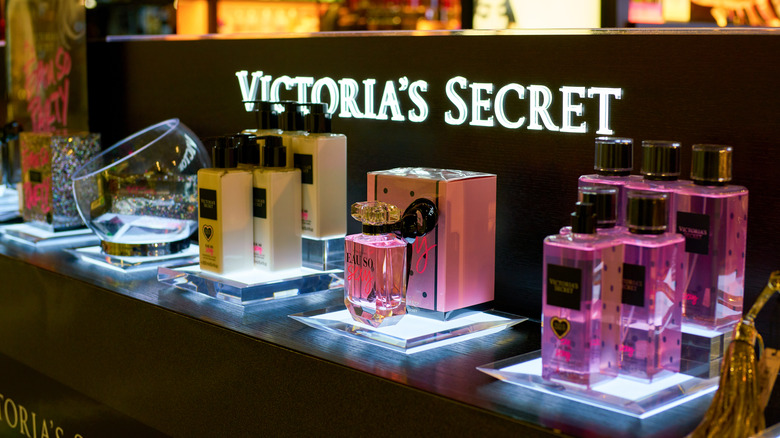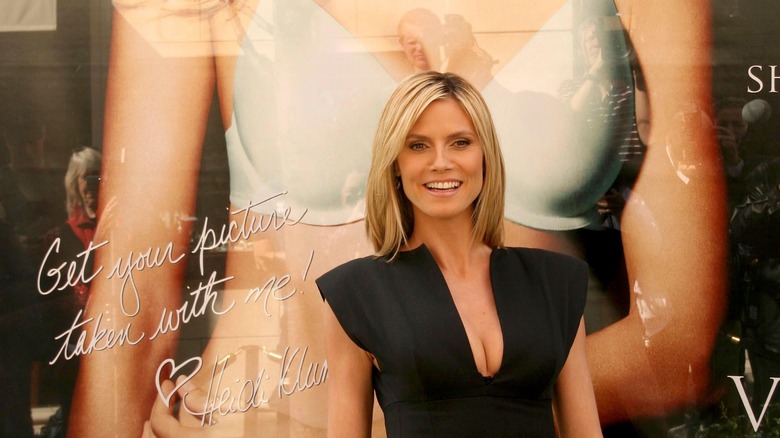The Dark Side Of Victoria's Secret
The following article includes allegations of and descriptions of sexual assault.
The role of Victoria's Secret as a retailer sounds straightforward: It should be a place for men and women to shop for clothes that will make them feel confident, attractive, and empowered. Only, that's not quite true. In 2018, Business Insider ran a piece on the lingerie retailer's falling sales. The brand was criticized for the continued use of sexual imagery, and an apparent, total lack of awareness of the changes in society. The article even warned that the company appeared on the brink of a financial disaster, so clearly, things weren't going well.
Do some digging, and it turns out that despite attempts at putting forward this sexy, all-American-girl fantasy world, insiders say there's a lot of shady stuff going on behind the scenes. There have been accusations of harassment and unfair — and sometimes dangerous — treatment of employees and models, reports of drug use, and as far as social media and public backlash goes? They've had plenty of that, too.
Experts say that their problem is a pretty straightforward one: they haven't changed with the times. While they're still focused on what one expert called "airbrushed glamour," the rest of the world has gone leaps and bounds into becoming more inclusive to people of all shapes, sizes, and colors. Customers moved on from a Victoria's Secret that hadn't done the same, and when the things they had done came to light? Customers — or rather, former customers — weren't happy.
Victoria's Secret had a major connection to Jeffrey Epstein
Go into any shopping mall in the 1980s or 1990s, and you'd see some familiar stores: Victoria's Secret, Abercrombie & Fitch, Bath & Body Works ... all stores created to make pretty people even prettier. That retail empire was the brainchild of Leslie Wexner, and by 1986, Forbes was reporting that he was about the sixth richest person in the country, worth upwards of $1.4 billion. Wexner, according to Vanity Fair, didn't just hire financier Jeffrey Epstein, he gave him absolute control of his money. The New York Times reported that by the mid-1990s, Epstein had near-complete control over not only Wexner's finances but the man himself: Wexner was quoted as calling Epstein a close personal friend.
After Epstein's downfall, other things started to come out too — like the story of Alicia Arden (via the New York Times). In 1997, she says she met with Epstein: She says she was told he was a talent scout for Victoria's Secret. Arden says they had a meeting in a hotel room, and that she ran when he tried to take her clothes off.
The full extent of the Wexner and Epstein relationship is unclear, but what is known is that when Epstein was finally prosecuted, among his assets were a 51,000 square foot house in Manhattan, a private jet, and — through his brother — a majority stake in a Manhattan condo allegedly used to keep his girls. All were previously owned by Wexner (via Vanity Fair).
Harassment accusations went all the way to the top
In 2020, The New York Times reported that Victoria's Secret went about handling complaints of harassment incorrectly, especially, they said, since the revelations of the connection between major shareholder Leslie Wexner and Jeffrey Epstein.
At the center of this case was Monica Mitro, Victoria's Secret's executive vice president of public relations. After decades at the company, she came forward in the fall of 2019 with complaints of sexual harassment and discrimination. She didn't go to human resources — later saying that she didn't believe she could trust them. Instead, she went to David A. Kollat, an independent director within the company. The following day, Mitro found herself placed on paid administrative leave, and on a list of people who no longer had access to the corporate building.
Details of just what happened aren't clear: The Times says that when they investigated, they ran into walls of silence, unreturned requests for comment, and others who cited confidentiality agreements. According to Mitro's LinkedIn, she ended her relationship with them in 2021 after 26 years and moved on to Nigel Curtiss. The New York Times reported that Victoria's Secret had eventually said that they had agreed upon settlement terms over the matter.
If you or anyone you know has been a victim of sexual assault, help is available. Visit the Rape, Abuse & Incest National Network website or contact RAINN's National Helpline at 1-800-656-HOPE (4673).
There have been accusations of a culture of misogyny
In early 2020, The New York Times ran a piece on a massive investigation they had done into what they called "The Culture of Misogyny Inside Victoria's Secret." They interviewed around 30 insiders and compiled scores of complaints about top executive Ed Razek. They quoted model Alyssa Miller as summing up Razek's behavior like this: "I am the holder of the power. I can make you or break you."
Miller is by far not the only one to lodge complaints, with others coming forward to claim that he had propositioned them, inappropriately touched them, and tried to convince them that in order to get their careers where they wanted them to be, they needed to start by sitting on his lap. Model Andi Muise said that she had rebuffed Razek's attempts to kiss her back in 2007, and the then-19-year-old Angel (who had been wearing her wings for two years), says she was dropped from the fashion show. The Times article reports that official complaints went back a long time and included incidents like a 2015 photoshoot where Razek publicly berated a PR employee for eating. She complained, says nothing happened, and then quit.
Since the exposé ran, more than 100 models have come forward to sign an open letter demanding the company be held accountable (via ABC News).
If you or anyone you know has been a victim of sexual assault, help is available. Visit the Rape, Abuse & Incest National Network website or contact RAINN's National Helpline at 1-800-656-HOPE (4673).
Models were persuaded to pose nude, then not compensated
In 2018, photographer Russell James released a second book of his photography, featuring Victoria's Secret models without the Victoria's Secret. When Esquire spoke to him about this second book of nude models, he said that he had asked himself, "Am I tone deaf? Should I even be doing a project like this?"
Not everyone was as thrilled with his work, and The New York Times found that there were plenty of women who hadn't been compensated for having their photos taken and included in his book. Many of the photos, they reported, were taken at the end of shoots he did as one of Victoria's Secret's regular photographers. He was so in demand, that he commanded a daily fee well into five figures. What happened, models said, was at the end of the day, he'd asked them to do a little extra, outside-of-contract work. That meant they weren't working for Victoria's Secret as they posed nude, and they say they weren't compensated for the photos he took. Then, in 2014, he published a book with those photos. Versions were sold for between $1,800 and $3,600, and they were marketed as "a voyeuristic journey into a world of subtle provocation."
Some — including 22-year-old Alison Nix — later claimed that anyone wanting to work for Victoria's Secret and go on their fun, all-expenses-paid trips needed to agree to pose nude for James. Attorneys for James and Victoria's Secret deny that was the case.
It took a head honcho's resignation to include a trans model
By 2018, it was inclusivity and body positivity — not unattainable perfection — that were defining the lingerie industry. It was amid this shift that Vogue sat down with Victoria's Secret chief marketing officer Ed Razek and VP of PR, Monica Mitro. Razek and Mitro lauded the brand's inclusivity, and when asked about the possibility of including plus-sized and transgender models, Razek had this to say: "We attempted to do a television special for plus-sizes. No one had any interest in it, still don't." On the subject of having transgender models in the televised show, he said, "No, I don't think we should ... Because the show is a fantasy. It's a 42-minute entertainment special."
Razek went on to claim that people were skinny-shaming the models, and all of those comments went over about as well as can be expected. Around the same time, Razek also dropped off social media for a while, only to condemn the public response, saying (via Vanity Fair), "I just can't take ... all the people trying to tell me what an idiot I am ... it's extraordinarily toxic."
Shortly after, Victoria's Secret's company account posted an apology reportedly penned by him contradicting what he'd told Vogue. Months later, The Guardian announced that the company had hired trans model Valentina Sampaio, and Razek had resigned.
Victoria's Secret founder Roy Raymond committed suicide
Victoria's Secret was originally the brainchild of a man named Roy Raymond. According to Huff Post, Raymond had gone into a store to buy his wife some pretty underwear when he found two things: No pretty underwear, and a salesperson who clearly thought he was a weirdo for shopping for women's clothes. So, he came up with the idea of a Victorian-era-bedroom-themed store where men could go to get women's underwear and not be judged. It was a huge hit, but the store continued to struggle for one big reason: Women themselves weren't shopping there.
Raymond never struck on the idea, but retail mogul Leslie Wexner did. So, in 1982, he bought Victoria's Secret for $1 million. He overhauled the image, and by 1995, the company was worth around $1.9 billion.
Raymond, however, never saw it go that far. After selling Victoria's Secret and seeing it start to take off, Raymond tried his hand at opening a high-end clothing store for children. That went bankrupt after just two years, and his personal life floundered, too. Raymond and his wife divorced, and then — in 1993 — he committed suicide. According to his obituary in The New York Times, he left behind two children.
If you or anyone you know is having suicidal thoughts, please call the National Suicide Prevention Lifeline at 1-800-273-TALK (8255).
They need a refresher on cultural appropriation
Victoria's Secret started their runway fashion show in 1995, and it wasn't long before it was less about the underwear and more about pageantry. On the surface, that's fine, but when Business Insider did a round-up of all the times they were accused of being less than racially and culturally sensitive, they found there were a ton of problems that really started happening in 2010.
That was when Emanuela De Paulo was dressed in animal prints and surrounded by men wearing little more than body paint, in a segment called "Wild Things." Putting a woman of color in what Business Insider also referred to as "jungle garb" didn't go over well, but it didn't seem to bother the powers-that-be.
In 2012, they were under fire again for dressing Karlie Kloss in a floor-length, Native American headdress and turquoise jewelry, and in 2014, they were again dressing models of color in tribal prints that led to the brand being condemned for "seem[ing] to exploit and fetishize cultures." The backlash continued in 2016, when white models were dressed in Asian-inspired costumes that were accused of mocking entire cultures, and in 2017, it was Indigenous American populations that they were accused of appropriating from. After years of backlash, it's not surprising that people were shocked that they hadn't caught onto the idea that what they were doing wasn't going over well. As Nylon observed, "Victoria's Secret still hasn't learned that cultural appropriation is wrong."
Their attempt at introducing a plus-sized model went predictably wrong
In 2019, Victoria's Secret added a model to their roster of Angels in what was initially viewed as an attempt to be more inclusive. The model in question was 25-year-old Hungarian model Barbara Palvin, and according to The Telegraph, the addition was lauded as a step forward in size inclusivity ... but only by some. Many more were less than impressed, especially when it was revealed that Palvin was 5-foot-8, weighed 121 pounds, and wore a size 4.
It's worth mentioning that according to Healthline, the average American woman is around 5-foot-4 and weighs 170 pounds.
Refinery 29 exposed another problem with their reported moves toward inclusivity, and that's some deceptive marketing. In 2021, the company advertised its returning swimwear line with the help of two plus-sized models. However, the swimwear line in question only went up to XL: that's a U.S. size of 16 to 18, which the outlet notes is well below what the clothing industry even considers plus-sized. So, what's going on here? Taylor Long, the founder of a size-inclusive swimwear line, summed it up like this: "[Victoria's Secret] is ... trying to capitalize on the size inclusion movement without doing any of the hard work" (via Refinery 29).
There are plenty of rumors of drug use
In 2015, Vogue reported that Gigi Hadid had taken to social media to condemn the accusations of a gossip site, which alleged she had been using illegal substances — namely, cocaine — at a Victoria's Secret party. Hadid responded (in part), "It's not only impossible but insane to me. I ... would never touch that." However, other Victoria's Secret models have claimed that many turned to drugs in order to keep the ultra-skinny physique demanded of them.
Erin Heatherton was one of the company's Angels from 2010 to 2013, and in 2021, she stepped forward to speak on the Fallen Angel podcast (via Cosmopolitan). She said that she had felt so pressured by the Victoria's Secret powers-that-be that she consulted with a nutritionist and agreed to be prescribed hormone injections and an appetite suppressant. The amphetamine-like drug was called phentermine, and some refer to it simply as "bathwater meth."
Bridget Malcolm told a similar story. The Independent says that she worked for Victoria's Secret in 2015 and 2016, and she's been open about how real the pressure was — something she claimed to have learned very quickly when she gained half an inch around her hips and was told that it made her too big for their standards. She later said (via Insider) that her agent's suggestion was cocaine and to engage in sex as much as possible to keep her weight at a minimum. That, she says, was in addition to the Ambien and Xanax she was already regularly taking.
If you or anyone you know is struggling with addiction issues, help is available. Visit the Substance Abuse and Mental Health Services Administration website or contact SAMHSA's National Helpline at 1-800-662-HELP (4357).
Angels have spoken out about the lifestyle they were forced to have
According to The Guardian, Victoria's Secret models are described as athletes, are lauded for their hard work, and others are told to "#trainlikeanangel." Some Angels have come forward to say that it's not okay, and have shared some terrifying tidbits about what they say they were forced to go through. Dehydration, reports reveal, is a major problem at Victoria's Secret fashion shows: So many models are said to skip drinking fluids to keep their weight down. Adriana Lima was cited as stopping all solid food nine days before she had to take to the catwalk.
It wasn't until after she left Victoria's Secret that Bridget Malcolm spoke out about what the lifestyle did to her, saying (via USA Today) that she developed anorexia, needed an average of 12 hours of sleep a day in order to function, and went a year without getting a period.
Model Selita Ebanks has also spoken about the requirements of working for Victoria's Secret, saying (via Image), "There's a code you have to follow. There is an expectation to maintain size, and unfortunately, we are going against Mother Nature. It is not something that's natural, it is not something that should happen."
If you are struggling with an eating disorder, or know someone who is, help is available. Visit the National Eating Disorders Association website or contact NEDA's Live Helpline at 1-800-931-2237. You can also receive 24/7 Crisis Support via text (send NEDA to 741-741).
Then there was that whole child labor thing
In 2011, Bloomberg did a massive investigation into products that were labeled Fair Trade. While it might make consumers feel good about their purchases, they found (via WBUR) that in some cases — including Victoria's Secret — that label was anything but feel-good.
Their investigation into the cotton used in Victoria's Secret garments led them to a farm in West Africa, where they found children laboring — starting at sunrise — to plant, fertilize, weed, and pick bugs off the cotton. The child's story they told was that of 13-year-old Clarisse, who was just one of many children who told investigators that in spite of the chronic pain she had already developed, she didn't dare slow down, lest she be beaten.
The cotton that Clarisse and the other children planted, tended, then picked was then shipped off to other countries, where it was processed and turned into Victoria's Secret products. Those garments, they found, were then sold as organic and fair trade. According to CNN, Victoria's Secret immediately responded with a promise to look into the findings, saying, "If this allegation is true, it described behavior that is contrary to our company's standards ... expressly prohibit[ing] child labor."
They were at the center of some major labor issues
In 2021, Industri-All Global Union reported that there was a huge protest going on outside of what used to be one of Victoria's Secret's overseas manufacturing plants. More than 300 workers were protesting outside of Thailand's Brilliant Alliance Thai Global building, which had closed in March. By the time of the June protests, 1,388 now-unemployed workers had yet to see their back wages, holiday, and severance pay ... to the tune of $7.61 million.
It was just one more in a series of less-than-stellar labor practices involving Victoria's Secret, and in 2007, Huff Post re-published findings that had originally been publicized by the National Labor Committee. They had been investigating one of the lingerie company's manufacturing facilities in Jordan, and it was dire stuff.
The report detailed horrible working conditions: Employees were given 3.3 minutes (and 4 cents) for each Victoria's Secret bikini they sewed, and mistakes and missed quotas were punished with beatings. Protests regarding working conditions were met with arrests, overtime was expected to be worked without pay (with most working 14 to 15 hours a day), wages were usually shorted, and employees were oftentimes forced to live on the industrial campus. Why? Because higher-ups would refuse to give residency permits to the workers brought in from other countries.
Victoria's Secret environmental concerns? What concerns?
As unthinkable as it might seem, Cosmopolitan says that when it comes to the least environmentally friendly industries, the fashion industry sits at the top of the list. (It's second, to be precise.) That's why Greenpeace launched a campaign called Detox My Fashion, and in 2011, scores of clothing companies signed up with a pledge to become more environmentally friendly. When 2020 rolled around, Greenpeace looked at the companies that had done the least to keep their promises. At the top of that list? Victoria's Secret.
It was reported that they (and fellow worst-offender, Nike) had done pretty much nothing to reduce their environmental impact, change their use of hazardous chemicals, or even put plans in place to go more eco-friendly down the road. (It's worth mentioning that some companies were lauded for the steps they had taken, including Zara and H&M.)
It's safe to say that 2020 wasn't a great year for Victoria's Secret and wasteful headlines. In February, The Guardian reported that hundreds of bras were found in the garbage bins beside a recently closed Colorado store, with locals lamenting the fact that they could have been donated to any one of a number of charities. Victoria's Secret claimed they were sample products, and apologized for giving the appearance of being wasteful.
They were called out for charging more for larger sizes
In 2015, Victoria's Secret got called out in a big way. The problem? Charging up to $4 more for a bra with a cup size bigger than a D.
One fashion editor, Ashley Hoffman, summed up the message they were sending like this: "You're less welcome here, you're kind of a hassle, so we'll take more money from you ... They're a bunch of self-esteem pickpockets" (via Cosmopolitan).
While yes, it could be argued that larger sizes take more material and cost more to produce, Cosmopolitan's research showed that Victoria's Secret was the only major bra retailer that they could find that simply charged more for larger bra sizes, instead of absorbing the costs across all their sizes. Vogue Business similarly found that the majority of clothing brands were of the mindset that pricing should be equal across the board, and when they did a deep dive into just how much larger sizes cost to produce, they found that the actual price difference was pretty negligible. The verdict? That was summed up by Good American co-founder and CEO Emma Grede, who said, "It shouldn't depend on the size of your backside what your choices are in fashion."
